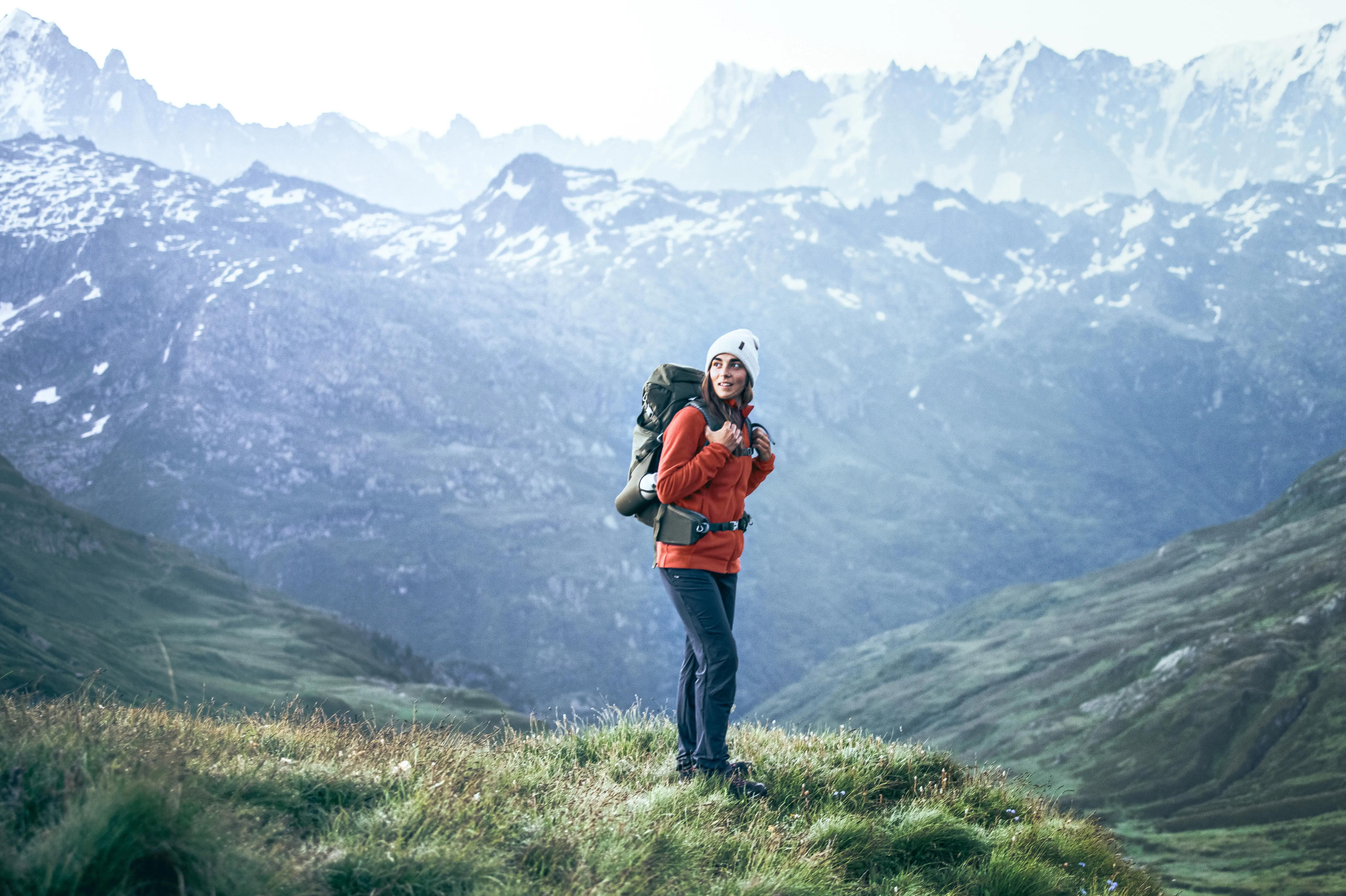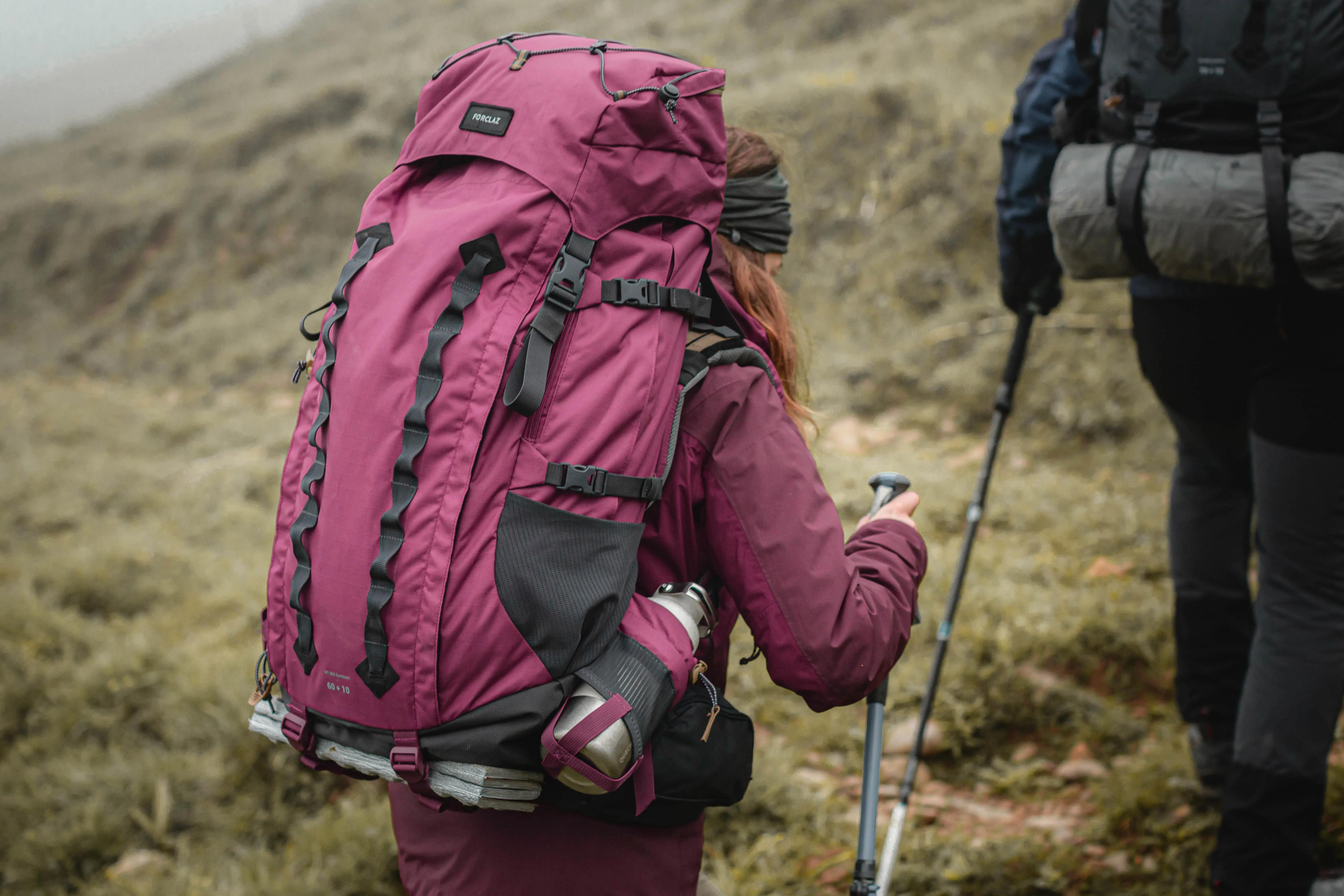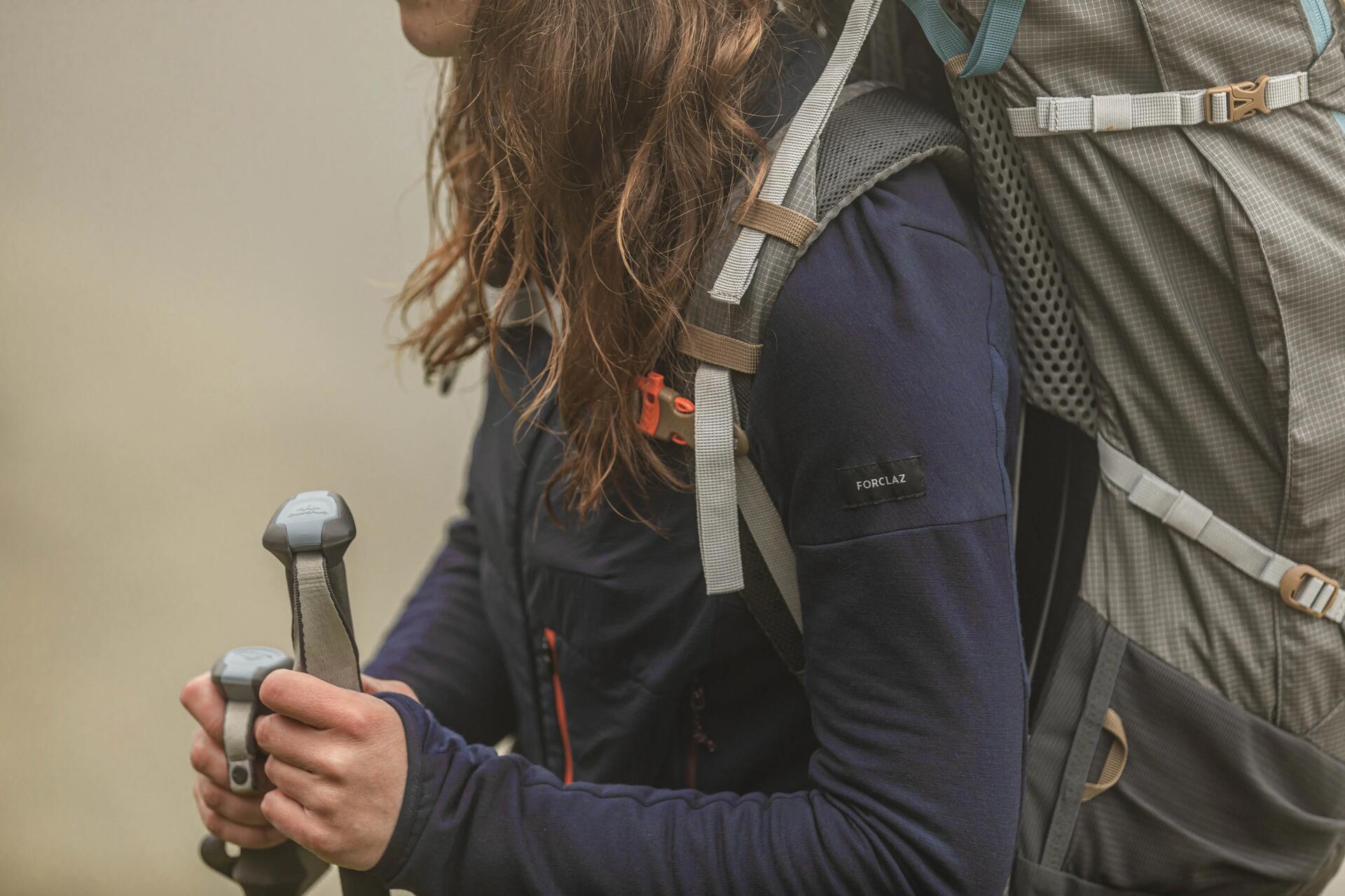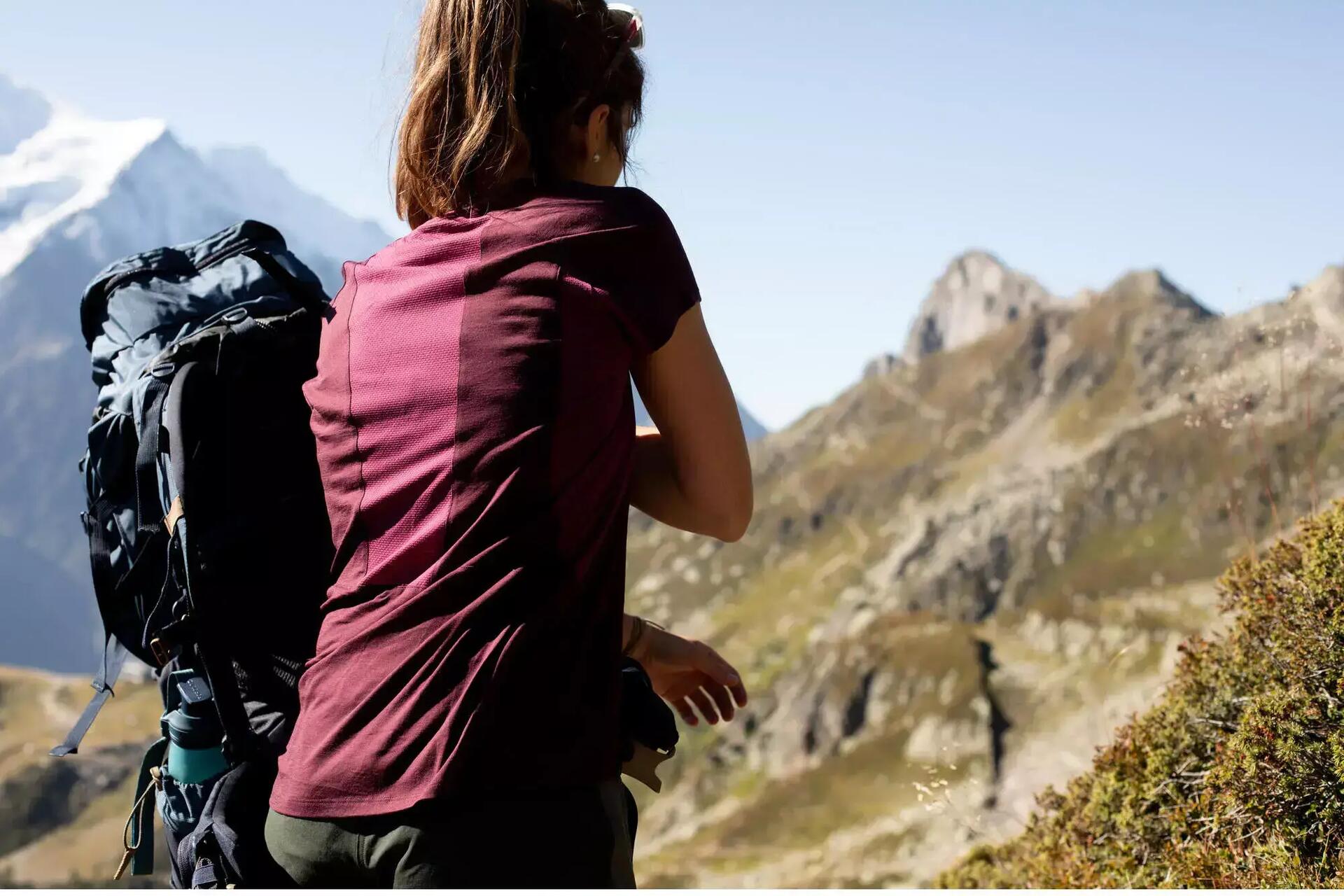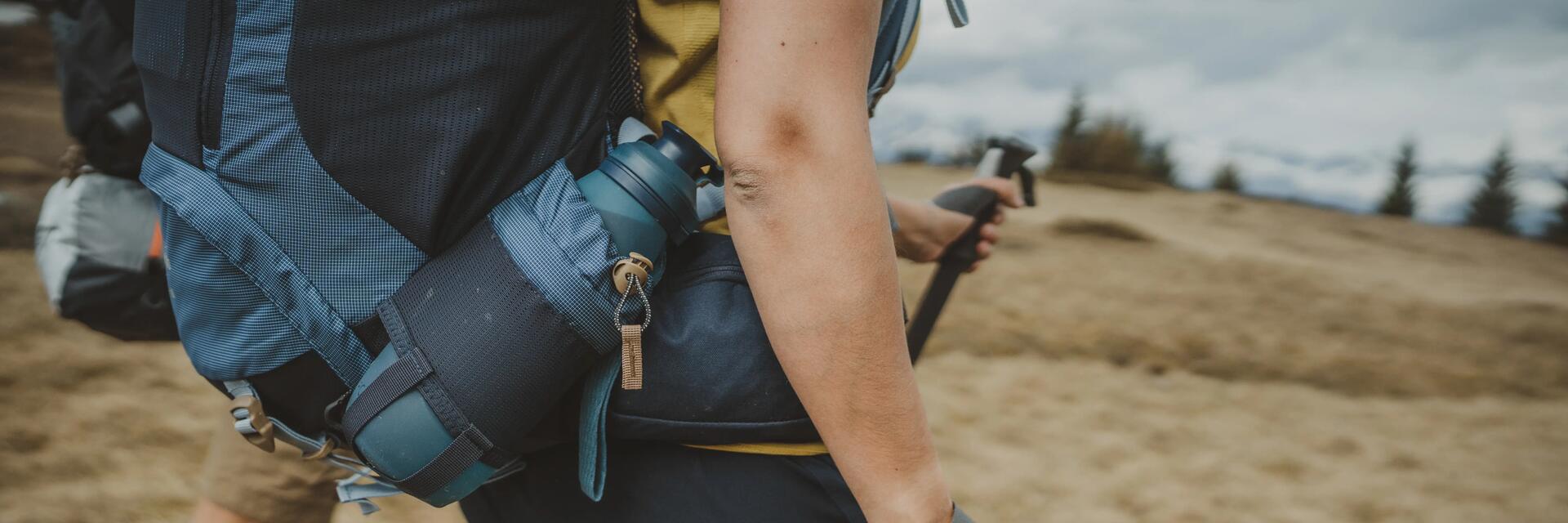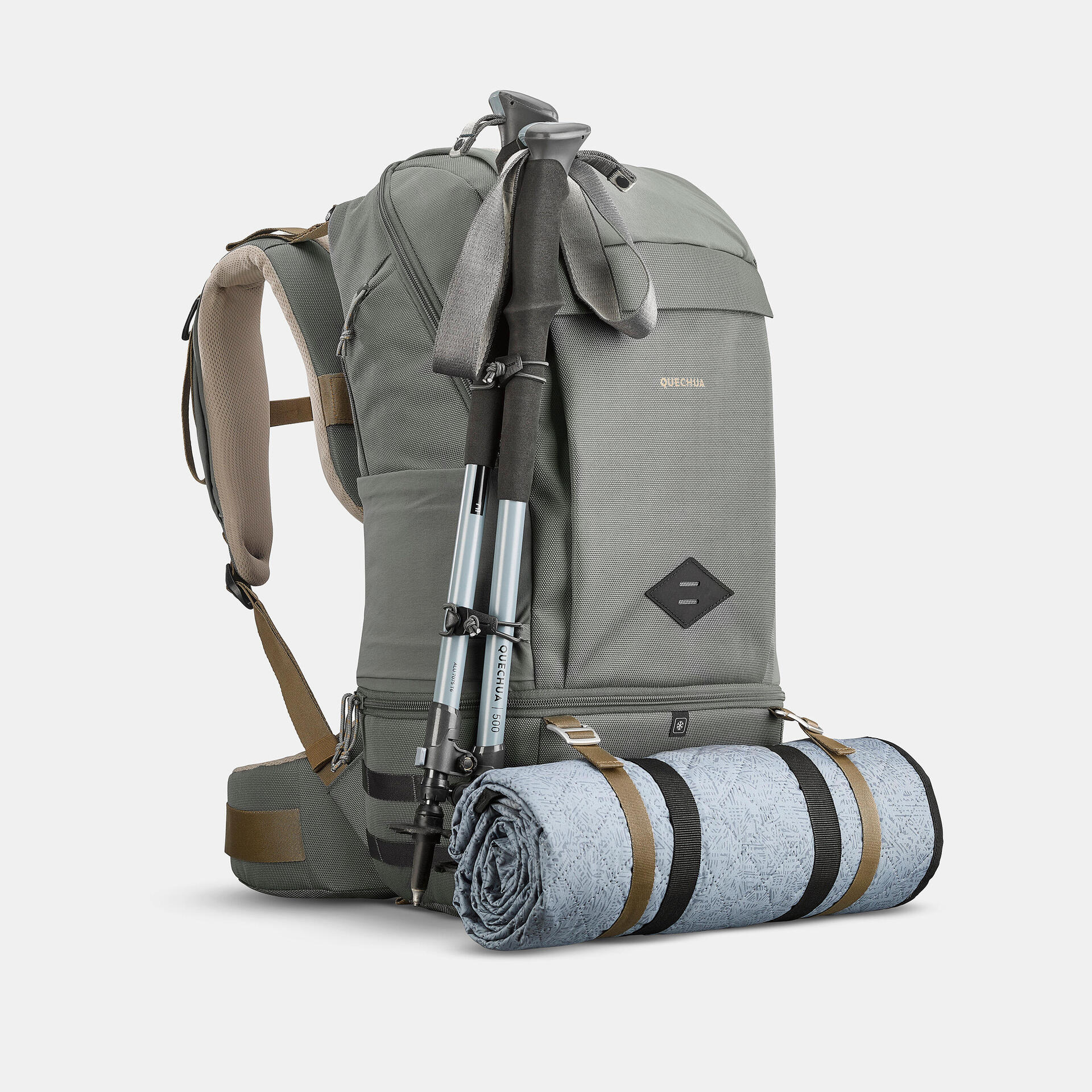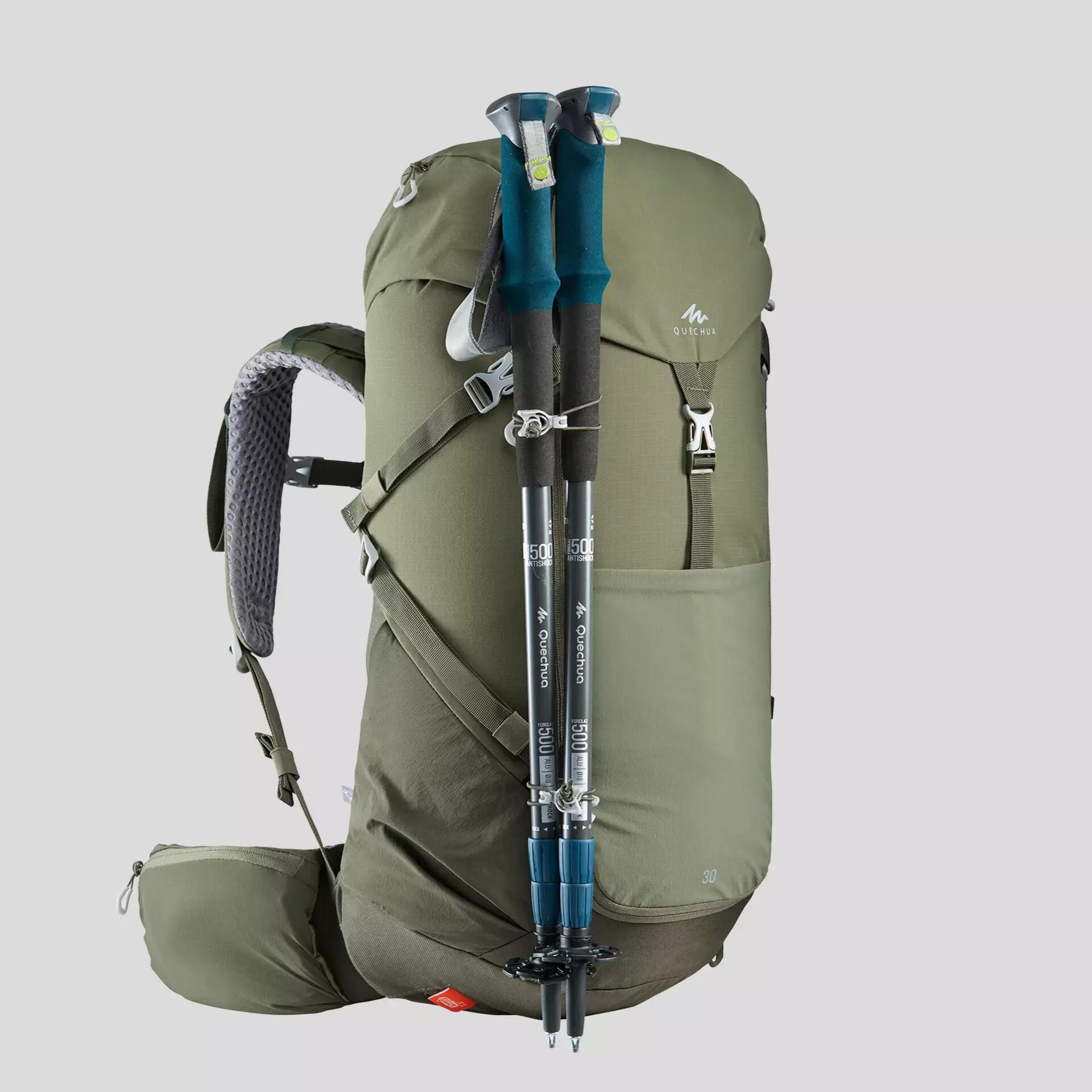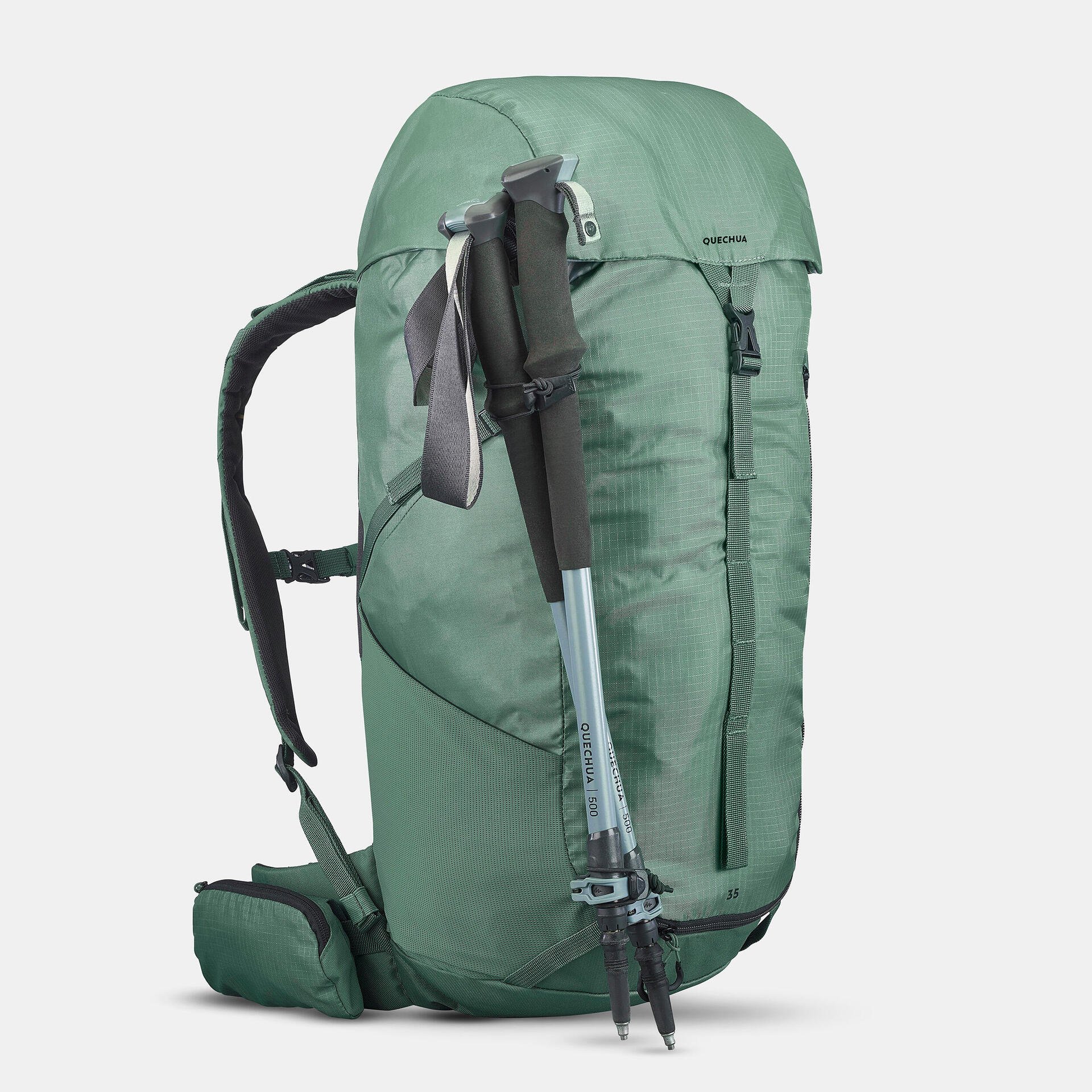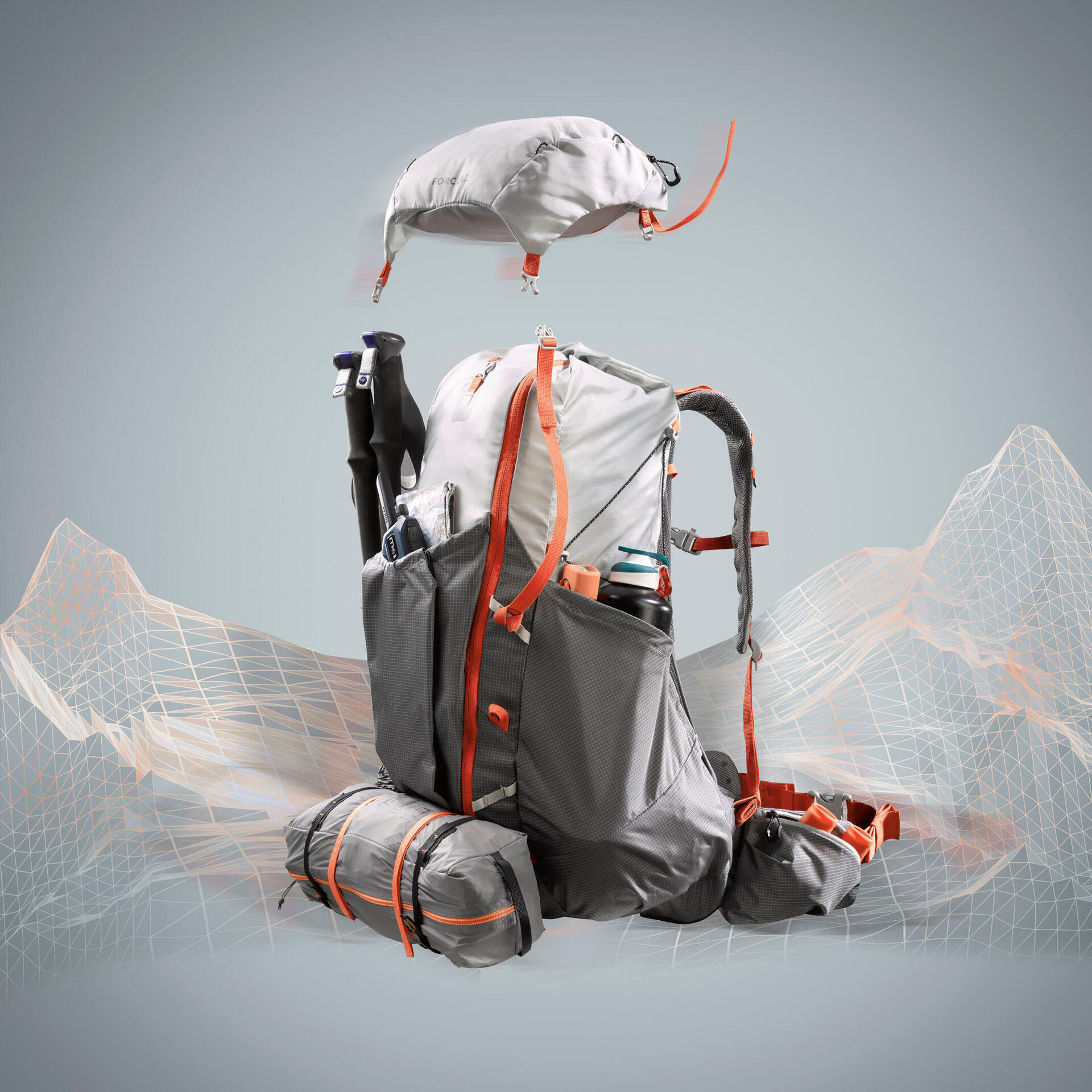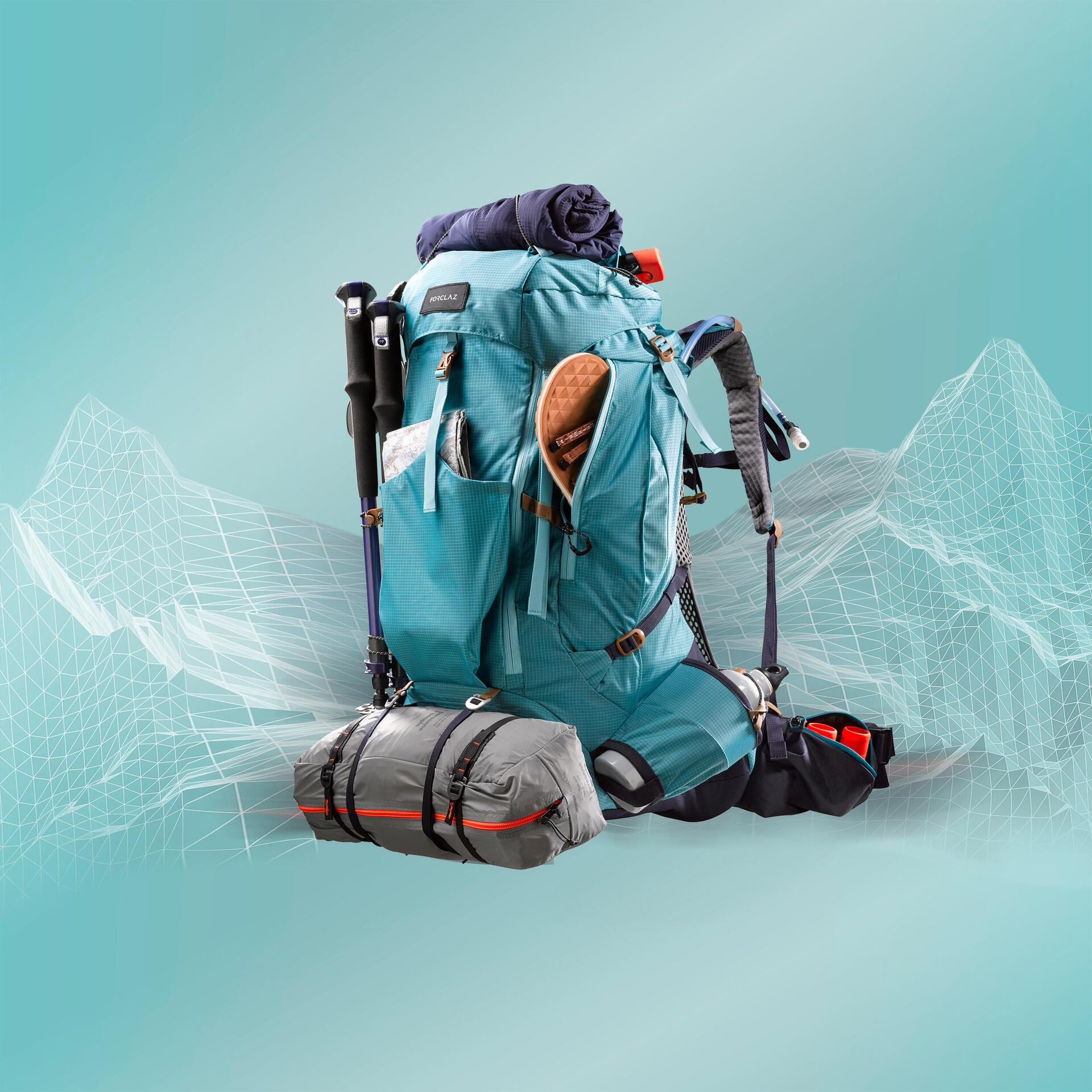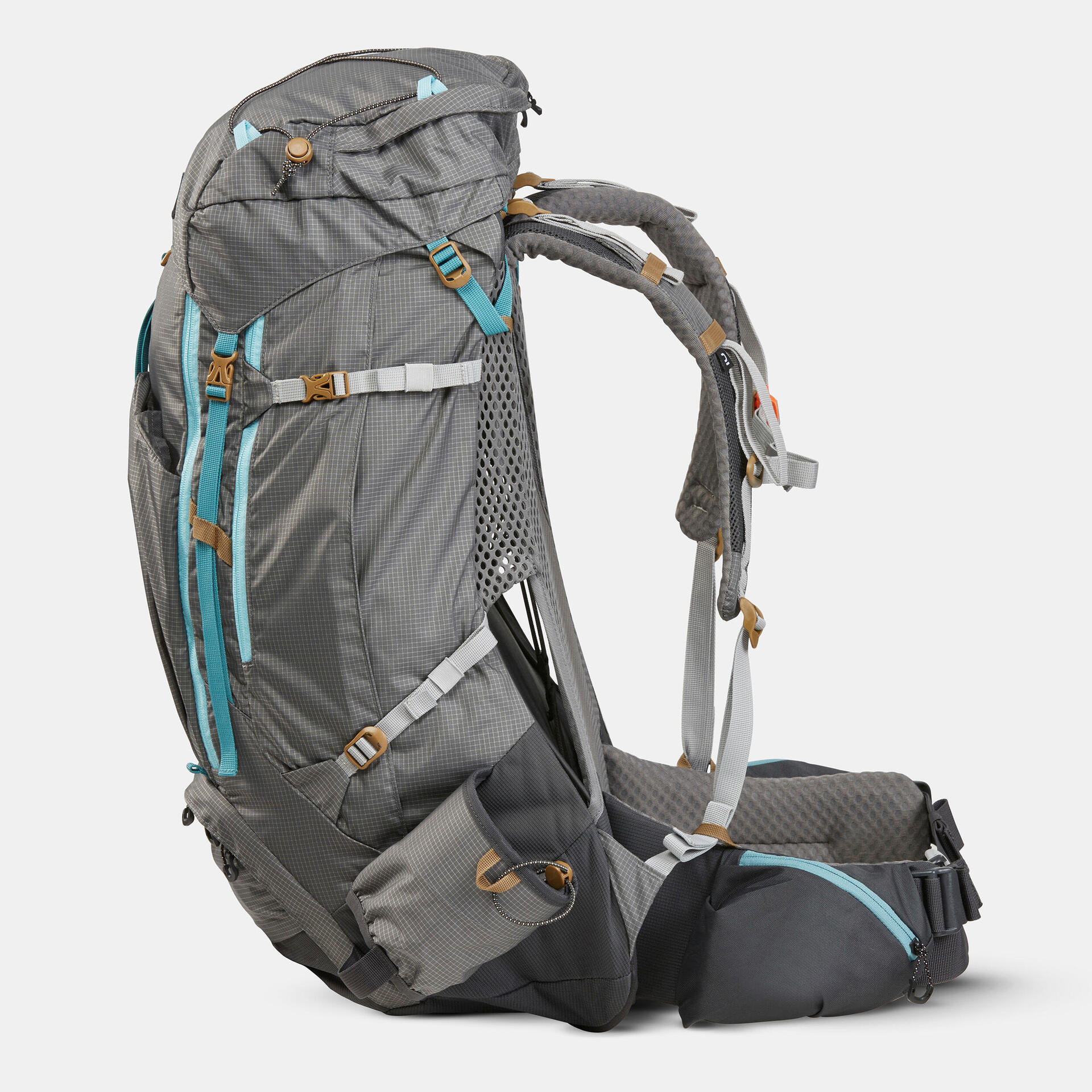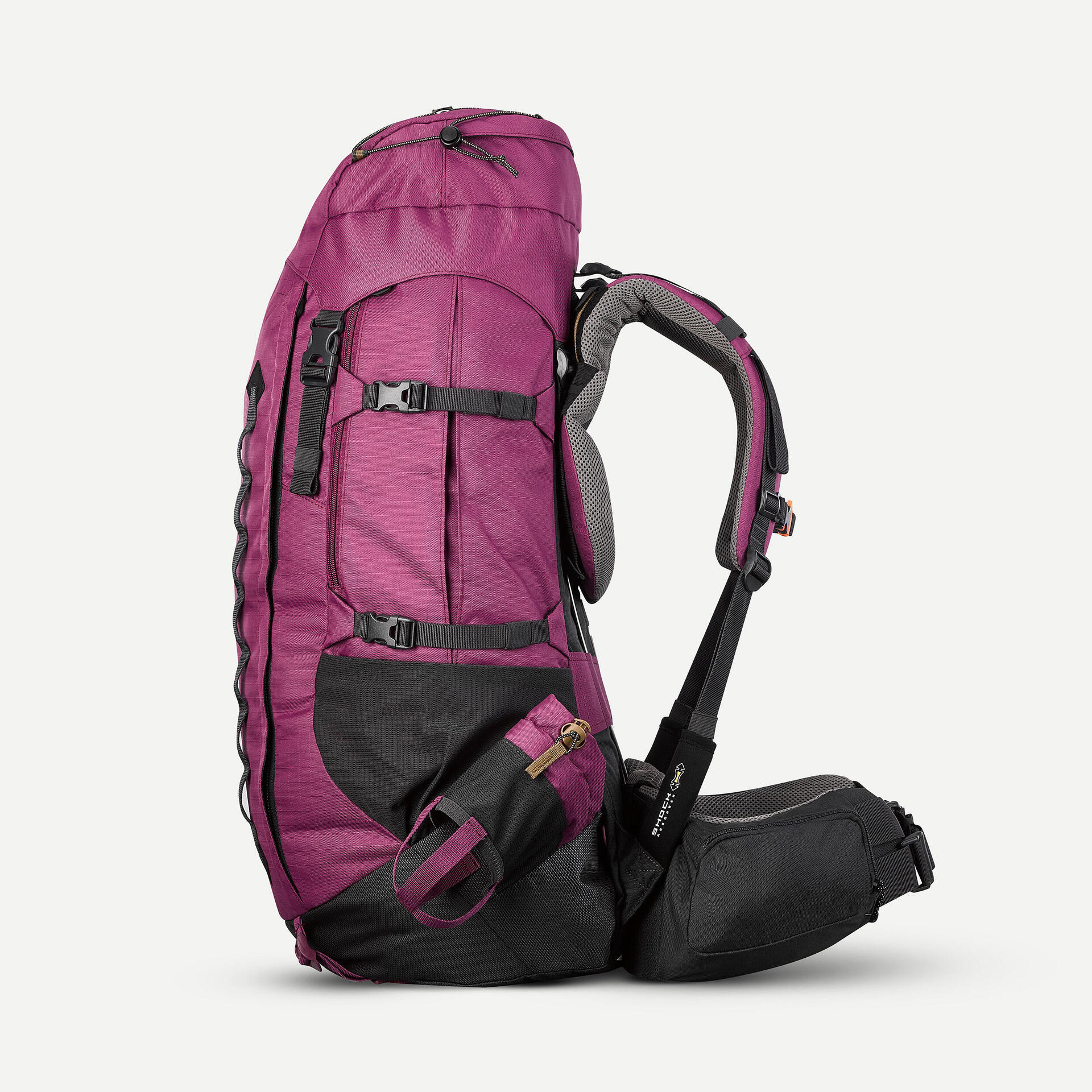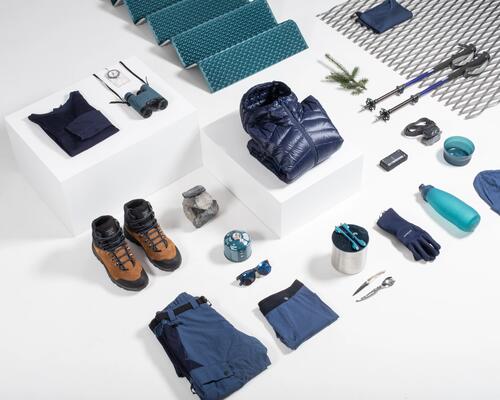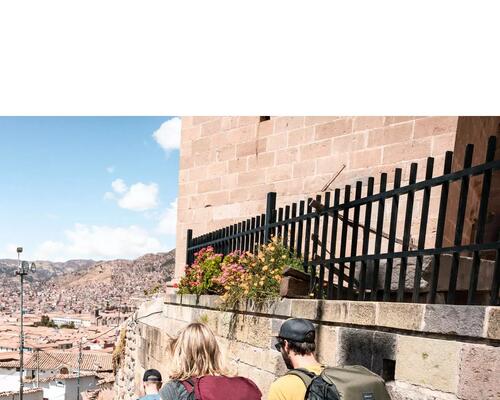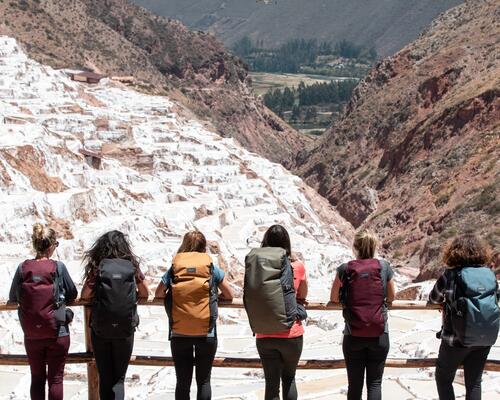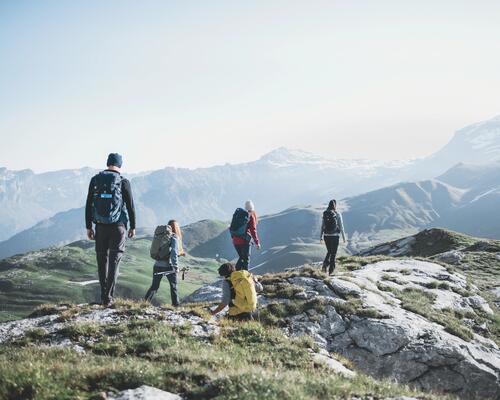How much should a trekking or hiking backpack weigh?
The weight of the backpack when it is empty is something to take into account when choosing your trekking equipment. We recommend choosing a backpack that weighs no more than 3 kg when empty.
However, this weight may vary depending on the type of backpack and its volume. For example, a women’s 50L trekking backpack weighs around 1.8 kg.
In addition, the weight of the bag when it is empty depends on the weight of your equipment. For equipment weighing more than 7 or 8 kg, you need a sturdy, comfortable bag, which will therefore be heavier when empty. An ultra light bag works best if your equipment is really light too.
Striking the right balance between the weight of the empty backpack and its comfort and sturdiness will help you find the right bag for you. In fact, some ultra light bags can lack structure and support, which can make them uncomfortable to carry if the bag is too full.
It’s important to note that a bag that is heavier when empty but comfortable and well-fitting may be preferable to one that is really light but uncomfortable to carry.
- 50L trekking backpack: approx. 1.8 kg
- Maximum recommended weight: 3 kg
Discover this web page that makes it easy to calculate how heavy all of your trekking equipment will be.
Standard advice is that the weight of your backpack should not be more than 15% of your body weight. For example, a woman that weighs 50 kg should carry a backpack that weighs no more than 7.5 kg or 10 kg as an absolute maximum.
The weight of the backpack when it is filled also depends on your level of training, the trip that you have planned, the length of time you will be wearing it, the altitude, your level of fatigue, etc. 
